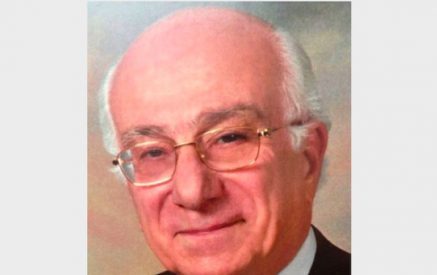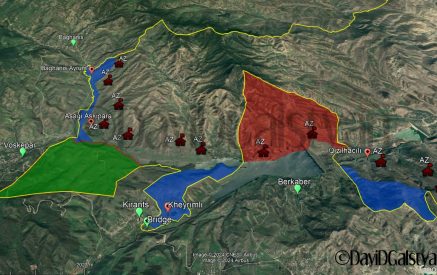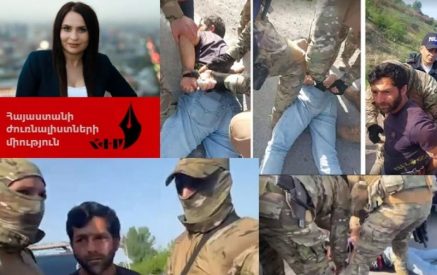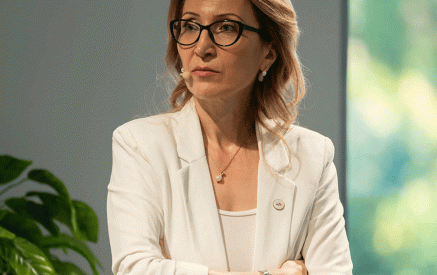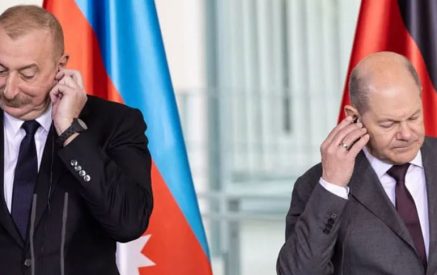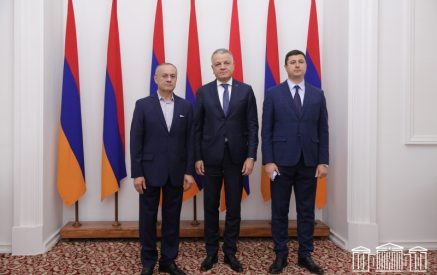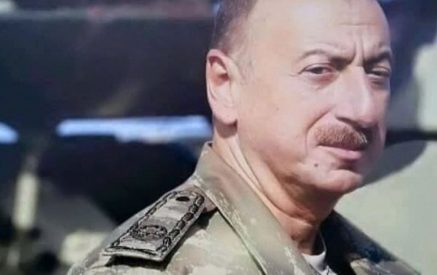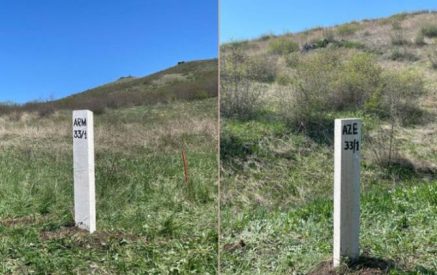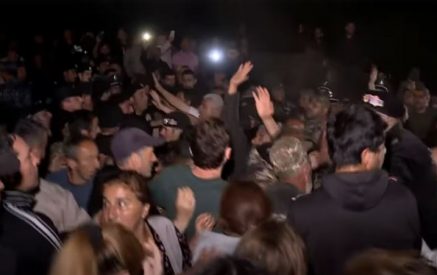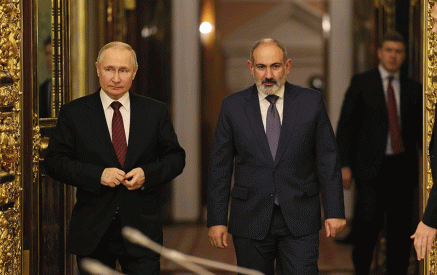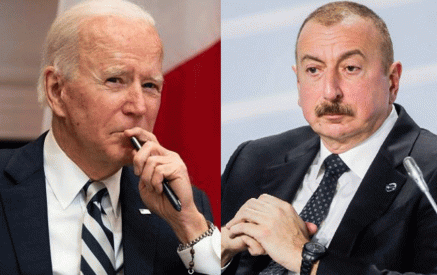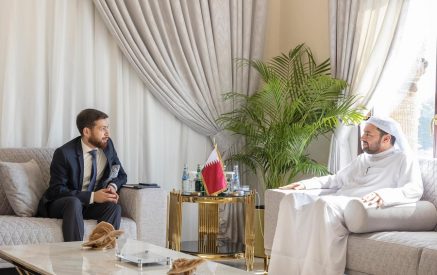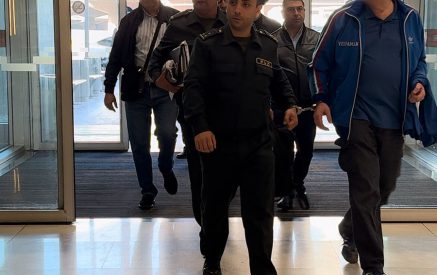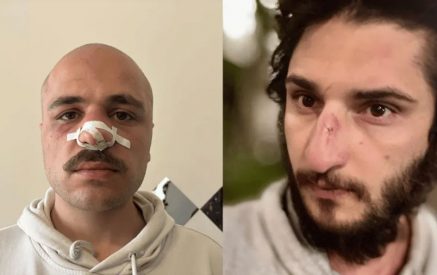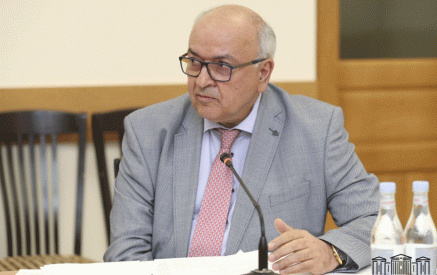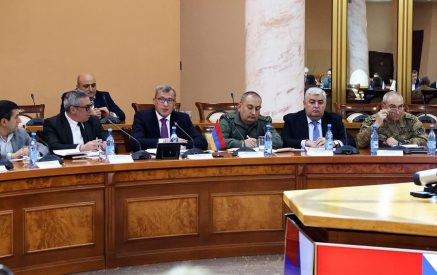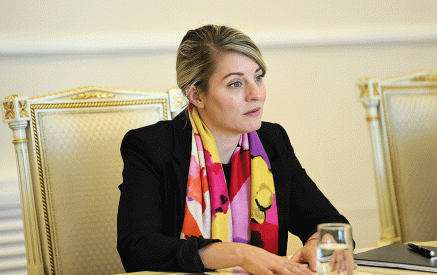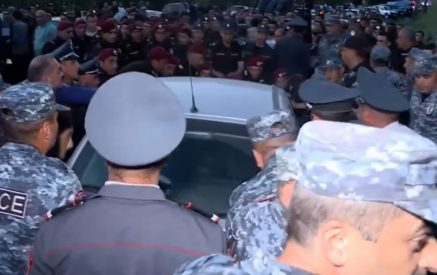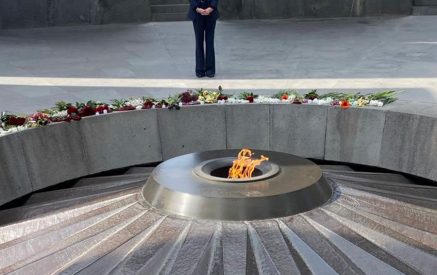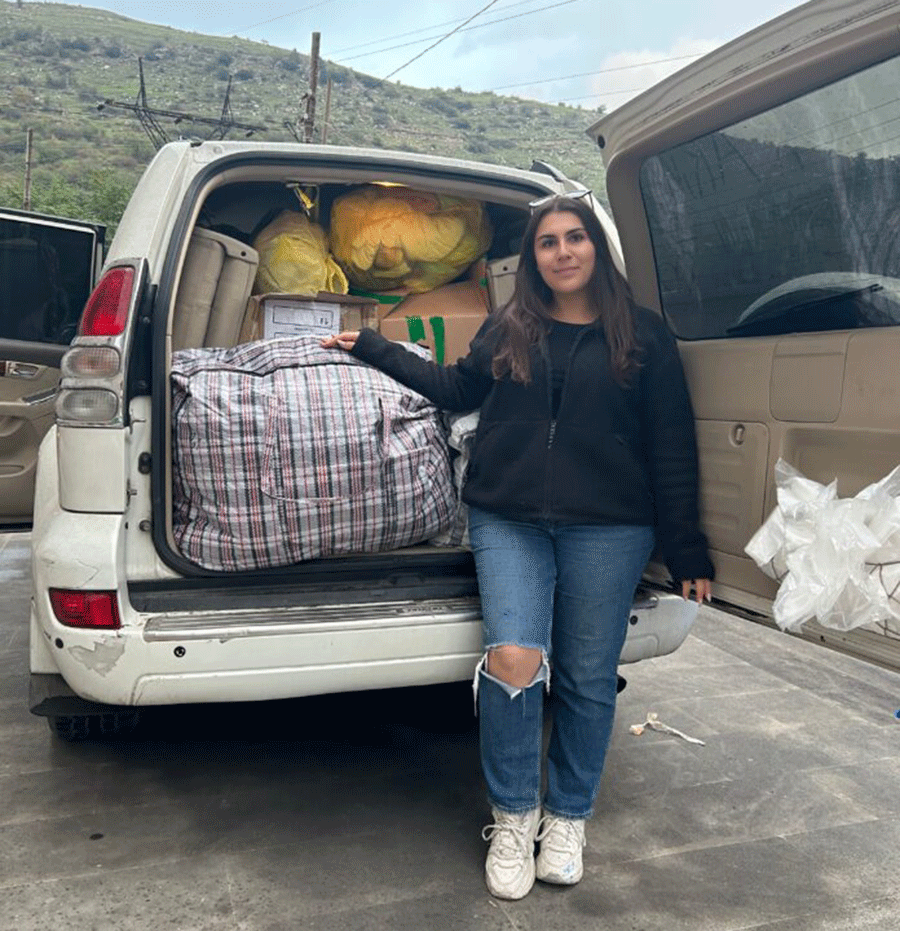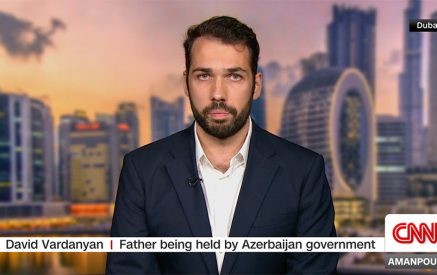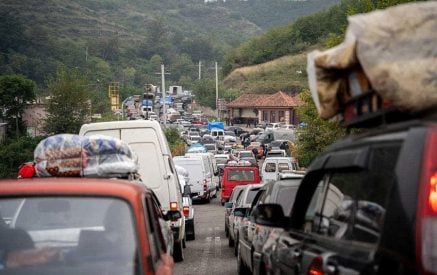by Alin K. Gregorian
The pall over everything in the Armenian world in the wake of the loss of Artsakh (Karabakh) is not going to go anywhere soon. It is heartening, however, to see some volunteers step up and helping their brothers and sisters who have left their homes and everything they have for the safety of Armenia.
Among the organizations helping is All for Armenia, which since its cofounding by husband and wife Araz Kekejian and Matthieu Sahakian in the wake of the 2020 war, has focused its efforts on the Lachin border village of Kornidzor, the first village in Armenia from Artsakh.
Read also
Among the volunteers there are two repats formerly from the Boston area, Serena Hajjar Bakunc and Anais Astarjian.
Astarjian, 26, a graduate of Emmanuel College, has been living in Armenia for the past two years, working at the Office of the High Commissioner of Diaspora Affairs.
She has been at the border, in Kornidzor, as well as the closest city to the border, Goris, helping All for Armenia work with the Red Cross to help feed and care for the 80,000 or so who have poured into the region, in appalling conditions.
Astarjian, speaking from Goris on September 27, said she and other volunteers were in the center of Goris, where they were helping the displaced people get settled.
Many of the arrivals have just what they could carry with them. Those, for example, who arrived by buses, need to navigate a “super chaotic” process to get their stuff and then try to find housing.
Astarjian said there are 15 registration desks inside the theater building where officials from the Ministry of Health and various medical volunteers assess the arrivals, assisted by volunteers from another NGO, Viva Foundation.
In addition, she said, the Red Cross is giving out survival essentials since “it’s very cold here.”
She added, “I’m wearing a fleece jacket and I am still shivering so much.”
Bakunc is currently coordinating the volunteers for All for Armenia. She is mostly in Yerevan but went to Goris over the weekend.
Like Astarjian, she moved to Armenia in the wake of the 2020 war. When not volunteering with All for Armenia, she is a communication specialist at the American University of Armenia.
Bakunc said, “All for Armenia is practically the only organization, aside from the Red Cross, on the ground there.
“Now that the refugee flow is coming to an end, World Vision, the World Food Program, UNICEF, and the big ones are there,” Bakunc added.
She added that their tents are located outside the building where the refugees do their registration upon arrival.
Bakunc noted, “Nearly all families stop at our tents at some point, tea, coffee, baby formula, diapers and hygiene products. There is a ton of traffic at our tents.”
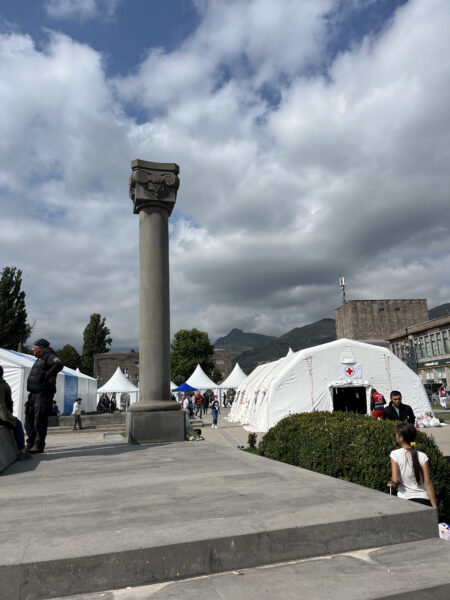
All for Amenia set up in Goris along with Red Cross tents
“We have sandwiches in bags up to the ceiling and sweets and chocolates. The kids are loving the sweets because they haven’t had them since the blockade,” Astarjian said.
“The people arrive super hungry,” Astarjian said. “Some have been on the road for 40 hours, with no food or water.”
Kornidzor is dear to Bakunc, because that is where her husband is from and that is where they met.
“We became close to the people of Kornidzor village, which is the first village on the Lachin Corridor,” Bakunc said, “right at the gates of Artsakh.”
There, the organization has renovated KorniTun, a community center, adding a second floor and putting in a guest house and classrooms for students, Bakunc added.
She further explained that Kornidzor is a village outside Goris, which is the largest city in the area, though not a large city by any means, with a population of 40,000.
“We immediately kicked into action,” she said, with the rooms in KorniTun used to house volunteers helping with the efforts.
Bakunc said she was “blown away” by the response in terms of donations and volunteers. More than 20 volunteers with the organization have participated in the efforts in Goris and Kornidzor.
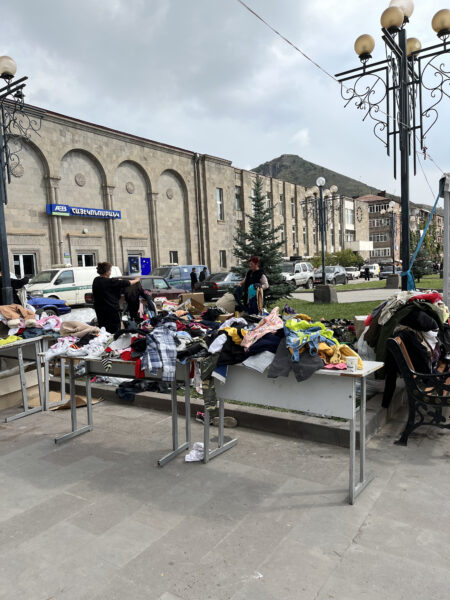
Clothing for refugees
When asked how she coped with seeing the desperation, she said, “I felt really paralyzed when I was in Yerevan. The finality of it all is truly heartbreaking. It’s done at once. How many people have died in the last 30 year? It is horrifying and devastatingly. All of us have failed.”
By contrast, she said, once she started planning her visit to Goris, and was “extremely overloaded,” she felt better as she was “constructively doing something.”
At this point the people are being sent to different places, Astarjian said, since with the immense numbers, they need to be distributed. “They were putting people on buses to Gyumri, which is very far from here,” she noted. About half the arrivals to date have some relations or family in Armenia with whom they can stay until they sort out a long-term plan, she added.
Part of that is because many had family members or friends who were visiting in Armenia in December, right before the blockade.
“There are a lot of cases like that, of people who couldn’t make it back,” Astarjian said.
The distance they were traveling from Artsakh to Armenia is not long, but it was the traffic jam on the bridge, where they were stuck, because of the sheer numbers of people attempting the distance.
Since All for Armenia has been working in the region for three years, it is easier for them to set up now.
Astarjian first came to Armenia with Birthright a couple of years ago and through them, got two internships, one at the NGO Path of Law and the second at her current office. The experience made her want to give back more to her homeland, she said.
And now, when they are seeing the very worst things, she said, she has to motivate herself. “They need us to be strong and for us to stay as positive and as welcoming as we can,” she said. “They need to see that Armenian is happy to have them.”
Of course, the face she shows there must hide the pain she is experiencing. “I’m OK. It is very difficult to see. But in the moment, I think how can I help them. I really try to keep it together.”
Among the horrific things she has seen was a mother who was covered in dust and her baby, with cuts and blood on her face, munching on a chocolate bar. Astarjian said she did what came naturally, which was take a baby wipe and clean her face.
For both Astarjian and Bakunc, the impetus for moving to Armenia was the 2020 war. Seeing the horrors of that war caused her to want to move to Armenia. “Everybody is needed. We need more diasporan Armenians engaged in Armenia,” she said.
Astarjian said what American-Armenians can do to help from afar, aside from donations, is to “contact their elected officials so that their tax dollars don’t go to Azerbaijan.” She stressed that everything that the Armenian National Committee of America and the Armenian Assembly of America are doing should be supported in terms of advocacy.
“We are very lucky as Armenian-Americans to be able to do this. We have that opportunity as Americans,” she said, about pushing for legislations.
Another person directly involved with the effort is Simon Hassoian, the CFO of All for Armenia, from France. Interviewed on October 2, he said he had arrived in Armenia on October 1 and was about to go to Goris the next day. He noted that the majority of the donations — 70 to 80 percent — is coming from individual donors in the US, more specifically in California. Basically, the organization has no overheads, as it has no offices and all the staff work as volunteers.
Hassoian said that All for Armenia is composed of three legal entities based in the US, France and Armenia.
Since September 23, he explained, All for Armenia has spent about $9,000 a day in Goris and Kornidzor.
Hassoian said that he did not want to allow himself to be emotional, and rather wanted to concentrate on the work he had to do. However, he said, a story making the rounds on social media in which a woman fleeing Artsakh said she had toyed with the idea of burning her house down, but did not have the heart to do so. Instead, she said she had washed all her dishes and straightened out her house, ready to receive a visitor.
“It really got me. This was the moment everything [emotional] came out,” he said.
Fundraising is ongoing through social media, especially the group’s Instagram page. The group operates independently, without a sponsor.

